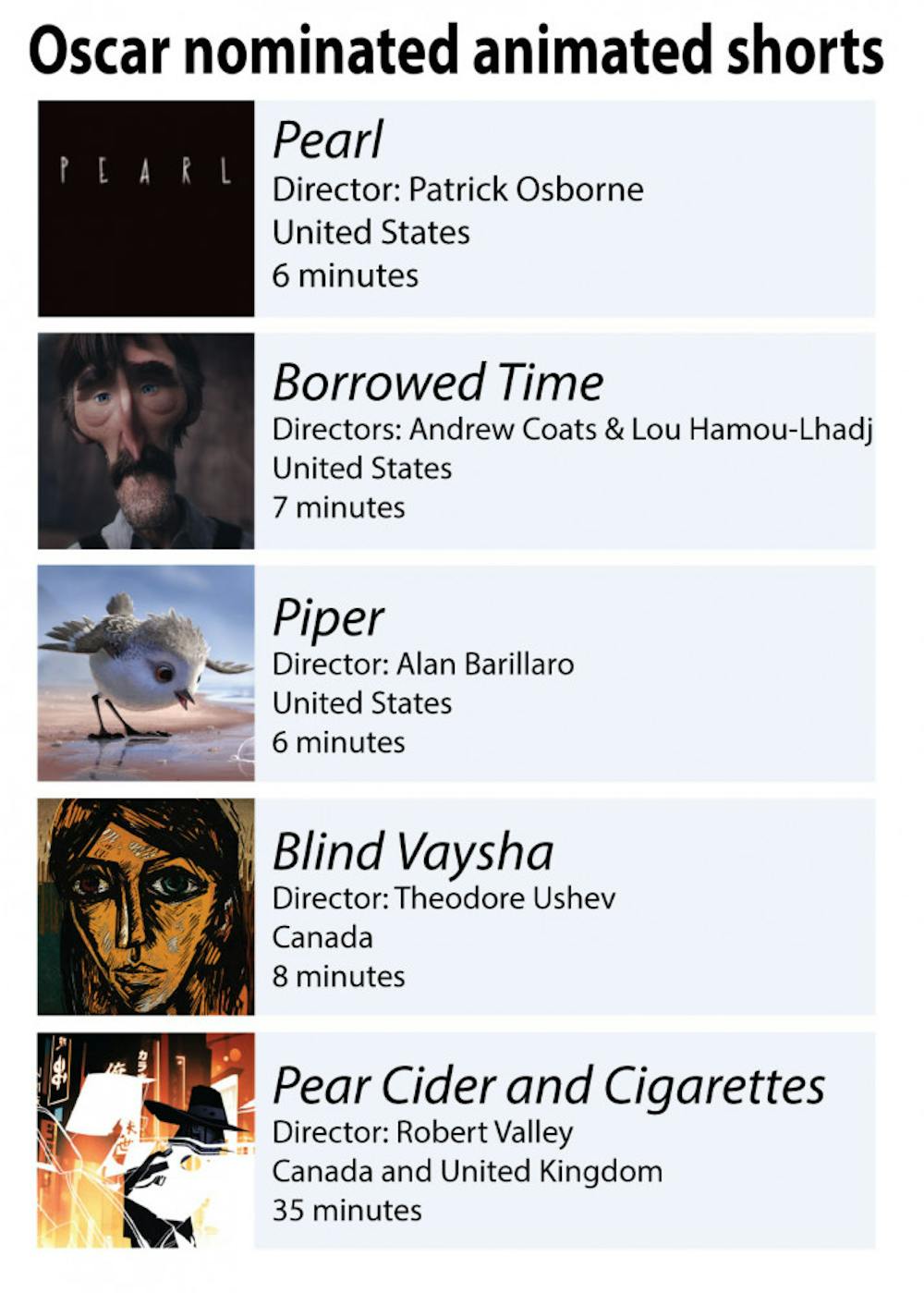Sandwiched between a commercial break and a lifetime achievement prize, the “Best Animated Short” award merits little attention from the ABC executives responsible for planning the Academy Awards. The lack of exposure primarily reflects the category’s inability to drum up interest amongst Oscar viewers as compared to the awards for acting, directing and “best picture.” Nonetheless, the hierarchy of award positioning also speaks to which forms of cinema film-goers privilege as artistically consequential.
In this regard, the animated short genre suffers on two fronts. Often condescendingly deemed a “children’s genre” unworthy of serious attention, animated films lack the critical prestige granted to “best picture” nominees. Likewise, short films are disparaged for their length, seen as incapable of producing the kind of rich world-building and expository detailing of long-form cinema.
Both characterizations reflect narrow-mindedness. Rather than limiting potential, animation frees creative minds to plumb uncharted domains of their imagination. For example, “Spirited Away” and “Up,” which both previously won “Best Animated Feature,” not only offer two of the most impressive cinematic experiences of the 21st century but also are unparalleled in their originality. Additionally, full-length features don’t require the constant attention to detail demanded of short films. “La La Land” can be forgiven for a scene that falls flat, while any significant misstep in an eight-minute short spells death. Thus, celebrating animated shorts provides more than just an entertaining reprieve from more “serious” film analysis — it shines a light on an under-appreciated medium.
Of this year’s crop of Oscar-nominated animated shorts, Pixar’s “Piper” stands out as a clear favorite, and is therefore most worthy of attention. Written and directed by Alan Barillaro, the film follows a formative moment in the life of a baby sandpiper as it learns to hunt mussels buried in the sand. Using photorealistic animation techniques, Barillaro paints his beach setting in such stunning and vivid detail that viewers could be forgiven for mistakenly believing the short was filmed rather than constructed on a computer screen. The other four nominated shorts explore more complex plots, but none approach their subjects with the care and emotional attention that “Piper” does. Barillaro understands that animation expands the theater of the imagination, and “Piper” not only captures the minutiae of the natural world but also the poetry of its rhythms. The film is in many ways a ballet — the sweeping musicality of the sandpipers’ forward-and-back dance with the incoming tide is exceptional in its charm and artistry.
“Piper” also meticulously embraces the scope of its protagonist’s world — an innocuous wave inspires unadulterated terror, and a clump of seaweed offers suitable refuge from the water’s danger. In perhaps the film’s strongest moment, the baby sandpiper finds itself beneath the surface of a small tide washing ashore. The tide wouldn’t reach the height of a human’s ankles, but “Piper” understands it as a portal of imaginative discovery, a window into a vibrant world teeming with life.
Certainly, “Piper’s” message of self-sufficiency and courage lacks the poignancy of other Oscar nominees, such as “Moonlight,” which presents a radical commitment to celebrating black humanity. But in its ability to perfectly execute the pulsating and musical energy of a diminutive environment, “Piper” stands as a work of artistry worthy of attention and praise.
“Piper” is not alone in meriting critical acclaim as an animated short. “Pearl” delivers a similarly simple plot, following a father-daughter relationship as they travel the country in a hatchback. While lacking “Piper’s” realism, “Pearl” uses Google’s 360 Spotlight Storytelling to push the boundaries of cinema and fully immerse viewers in the visual experience. Similarly, “Blind Vaysha,” “Borrowed Time” and “Pear Cider and Cigarettes,” despite their faults, rise to the quality of imaginative storytelling present in most best picture nominations.
In one of the Oscars’ rare quiet moments, a pair of Hollywood elites will come on stage to condescendingly introduce stories about cute little birds, family roadtrips and three other narratives unworthy of critical acclaim. If you’ve muted your television by then, turn the volume up for just a moment when the eventual winners come on stage to give their speeches. These films deserve your attention, too.





